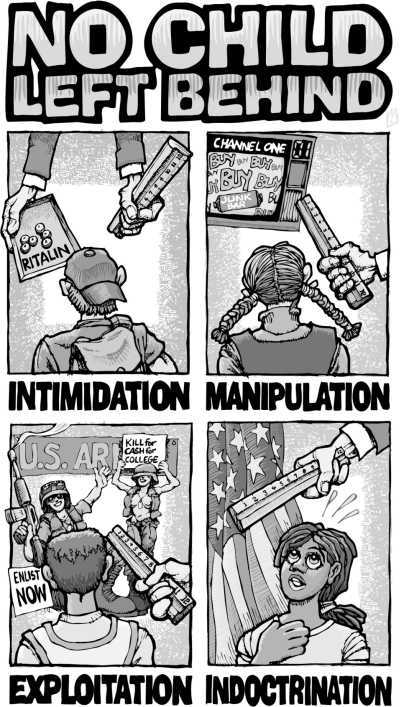‘No Child Left Behind’ has failed

Lily Eskelsen García is president of the National Education Association. Otha Thornton is president of the National Parent Teacher Association.
Public education for every child was an American idea, but it has always been a local and state responsibility. Even when Congress passed theElementary and Secondary Education Act 50 years ago, the intended federal role was limited but clear: ensuring equal opportunity.
The act provided federal resources for states to level the playing field between schools in wealthy and poor districts. However, its 2002 reauthorization, which became known as No Child Left Behind, took the law off track by mandating that all students hit arbitrary scores on standardized tests instead of ensuring equal opportunities.
No Child Left Behind has failed. Now we have a chance to fix the law by refocusing on the proper federal role: equal opportunity. To do that, we must change the way we think about accountability.
Under No Child Left Behind, accountability has hinged entirely on standardized test scores, a single number that has been used to determine whether students graduate or teachers keep their jobs. The problem is, a single test score is like a blinking “check engine” light on the dashboard. It can tell us something’s wrong but not how to fix it.
What we need instead is a whole dashboard of indicators that monitor better measures of success for the whole child — a critical, creative mind, a healthy body and an ethical character. And we need indicators of each student’s opportunities to learn — what programs, services and resources are available?
Success should be measured throughout the system — preschool to high school — but a standardized test tells us so little. We want to know which students are succeeding in Advanced Placement and honors programs, where they earn college credit in high school. You can measure that. We want to know which students have certified, experienced teachers and access to the support professionals they need, such as tutors, librarians, school nurses and counselors. We want to know which students have access to arts and athletic programs. Which middle school students are succeeding in science, technology, engineering and math tracks that will get them into advanced high school courses, which will get them into a university. You can measure all that, too.
And we want the data broken down by demographic groups, so we can ensure that all types of students have access to these resources. Without this dashboard of information, how would the public know which children are being shortchanged? How would anything change on the local or state level?
Real equal opportunity, of course, isn’t a “one size fits all” proposition. It means providing every child whatever he or she needs to learn, whether it’s tutoring and mentoring, counseling or other services. If a student comes to school hungry or sick, can we really say that she has an opportunity to learn? Of course not — and we must acknowledge this by seeing each student as a whole human being with individual needs.
We must also recognize that the misuse of test scores has had unintended negative consequences, especially for students at high-poverty schools. In service to high-stakes “test and punish” threats, schools with the most limited resources have been most likely to cut back on history, art, music and physical education, simply because they aren’t covered on standardized tests. Those are the schools where test prep has robbed ‘No Child Left Behind’ has failed - The Washington Post:
